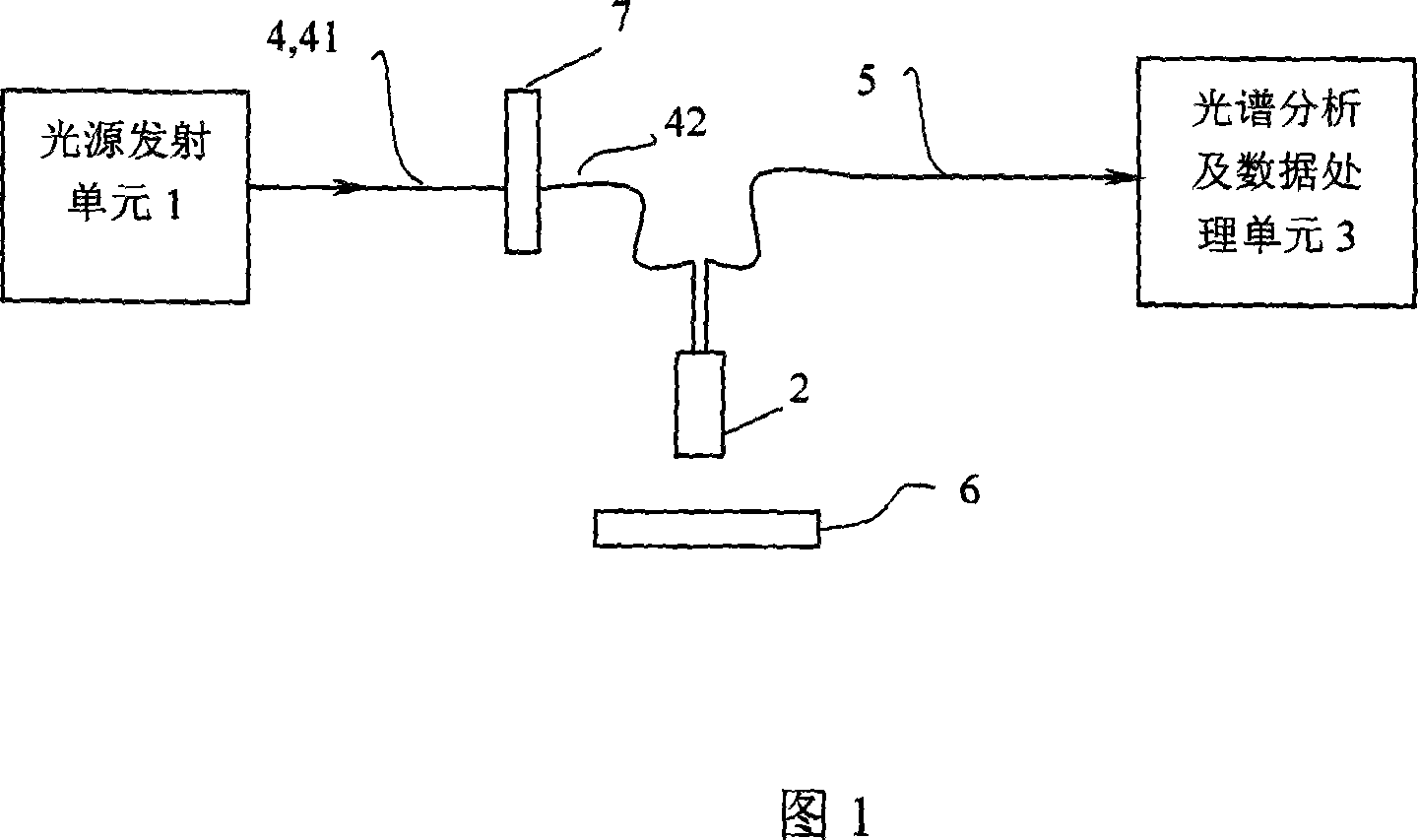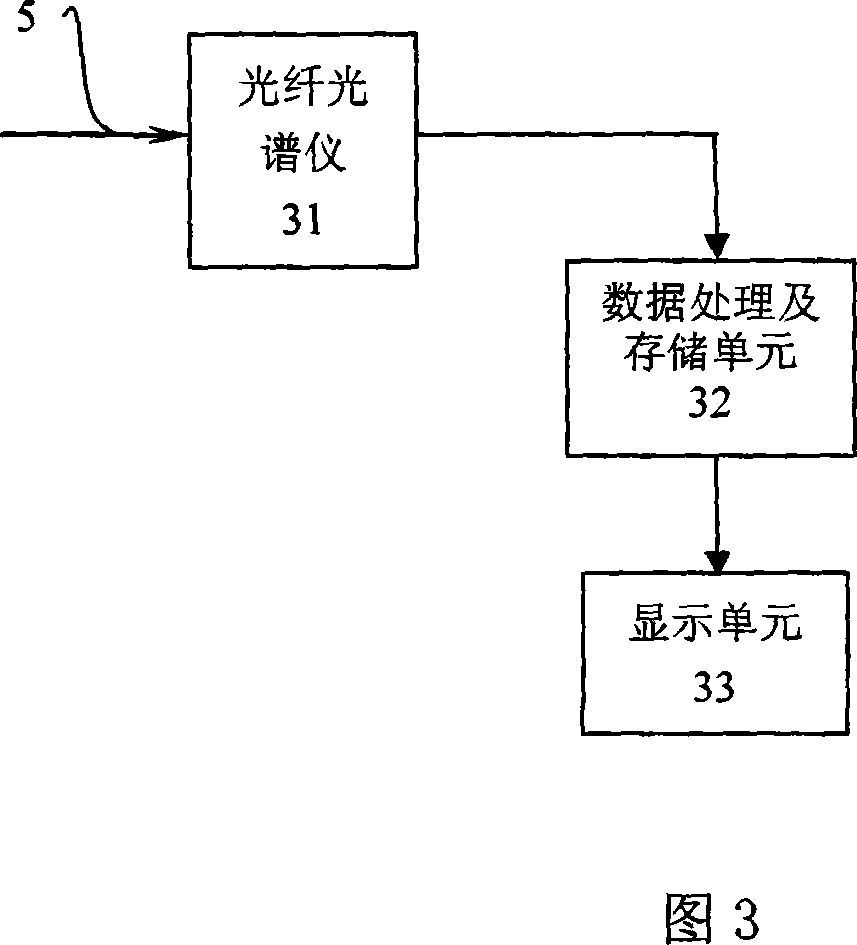Optical detection device and working method for tissue of living body
A living tissue and optical detection technology, applied in medical science, diagnostic recording/measurement, diagnosis, etc., can solve the problems of not considering the absorption characteristics of chromophores, missed or misdiagnosed, and inability to detect and diagnose tissues in the body
- Summary
- Abstract
- Description
- Claims
- Application Information
AI Technical Summary
Problems solved by technology
Method used
Image
Examples
Embodiment 1
[0049] (Example 1, living tissue optical detection device)
[0050] Referring to FIG. 1 , the living tissue optical detection device of this embodiment has a main detection device and a diffuse reflection plate 6 independent of the main detection device. The main detection device includes the main body of the main detection device; the main body of the main detection device has a light source emitting unit 1, an optical fiber probe 2, a spectral analysis and data processing unit 3, a transmitting optical fiber 4, a receiving optical fiber 5 and an optical switch 7.
[0051] The light source emitting unit 1 is a device that emits light with a wavelength range of 400 to 1000 nanometers when in use (the light emitted in this embodiment has a continuous white light spectrum when used, and its wave bands are visible light and near-infrared. You can also choose to emit continuous visible light. Light source emitting unit 1, or select the light source emitting unit 1 that emits a con...
Embodiment 2
[0064] (Example 2, living tissue optical detection device)
[0065] See Figure 7, Figure 4-2 and Figure 5-2, the rest are the same as in Embodiment 1, the difference is that in this embodiment, the transmitting optical fiber 4 is changed to a single optical fiber, and the receiving optical fiber 5 is divided into two sections before and after , the front section 51 of the receiving optical fiber 5 is an optical fiber bundle with 3 optical fibers (in other embodiments, it can be any possible value greater than 3, such as 6, 10, 20, etc., or it can be 2, and the corresponding optical switch 7 The number of branches at the branch end 72 is not less than the number of optical fibers), and the rear section 52 of the receiving optical fiber 5 is a single optical fiber. The number of optical switches 7 is still one.
[0066] See Fig. 4-2 and Fig. 5-2, in the present embodiment, the front end of the emitting fiber 4 is connected to the light source output end of the light source emit...
Embodiment 3
[0068] (Embodiment 3, living tissue optical detection device)
[0069] See Figure 8, Figure 4-3 and Figure 5-3, the rest are the same as in Embodiment 1, the difference is that the receiving optical fiber 5 is divided into front and rear sections, and the front section 51 of the receiving optical fiber 5 is an optical fiber bundle with 2 optical fibers , the rear section 52 of the receiving optical fiber 5 is a single optical fiber. The number of optical switches 7 is 2, and the first optical switch 7 is arranged in series by its optical port between the rear end of the optical fiber of the front section 41 of the launching optical fiber 4 and the front end of each optical fiber of the rear section 42 of the launching optical fiber 4, The second optical switch 7 is arranged in series between the rear end of each optical fiber in the front section 51 of the receiving optical fiber 5 and the front end of the optical fiber in the rear section 52 of the receiving optical fiber 5 t...
PUM
 Login to View More
Login to View More Abstract
Description
Claims
Application Information
 Login to View More
Login to View More - R&D
- Intellectual Property
- Life Sciences
- Materials
- Tech Scout
- Unparalleled Data Quality
- Higher Quality Content
- 60% Fewer Hallucinations
Browse by: Latest US Patents, China's latest patents, Technical Efficacy Thesaurus, Application Domain, Technology Topic, Popular Technical Reports.
© 2025 PatSnap. All rights reserved.Legal|Privacy policy|Modern Slavery Act Transparency Statement|Sitemap|About US| Contact US: help@patsnap.com



